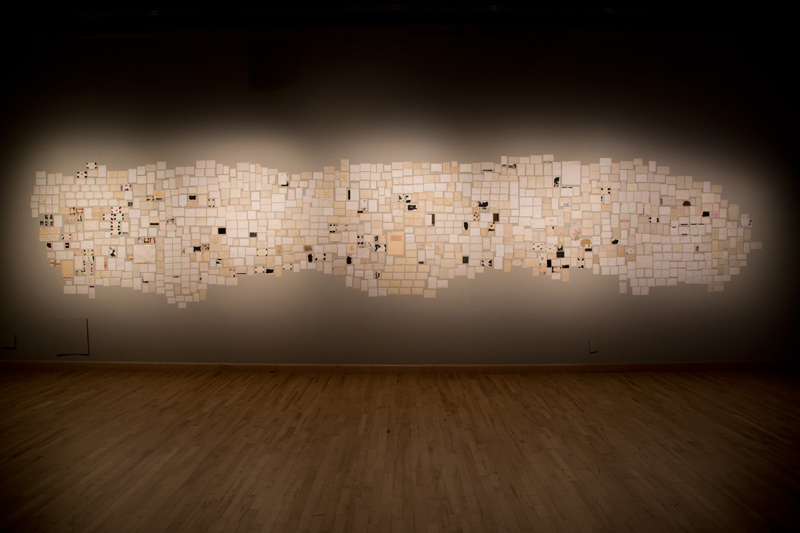Not to be given away
Exhibition Installation at Maison de la Culture Mercier, Montreal, Qc, 2015
For years I have been collecting photographs, concentrating my search on vernacular photos from the early 20th century. I have used these images extensively in previous works. Recently, while rummaging through my collection, I turned to look at the back of the photo and in a light pencilled handwriting someone had written, “Not to be given away”. How ironic. How many times had this photo been given away? Where did this photo come from? What was so special about the photograph? Looking at every picture, I became fascinated by how people chose to annotate their photographs. The descriptions, the handwriting and the textures revealed an entirely new archive.
Some of the notes explain the photograph in detail, while others only have names or a sentence that might not even relate to the image. Other times, there is only texture, dried glue that once held the photo in an album or pieces of black paper that the photo was once secured to.
My interest has been typically with the photographs and the vernacular style but I now find the notes or the lack of much more telling. The writing becomes more personal, more authentic than the actual photograph. We take pictures to remember. We photograph our vacations, holidays, weddings, our children and everything in between. The photograph, since the mid-1800s, has been an important personal archive and we continue to live through them. Our immortality resides on flimsy pieces of paper or digital files that abstractly live in our computers and we expect our loved ones to carry us with them. At a point, we are no longer remembered and the photos we once cherished become simply an image.
By hiding the picture and only revealing the backs of the photographs, I hope that one can create their own imagery either by remembering loved ones, reviving a family photo archive or simply being inspired by the words to create entirely new images.















